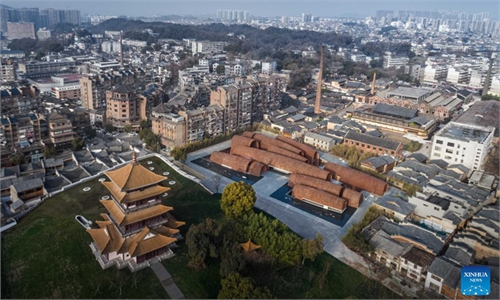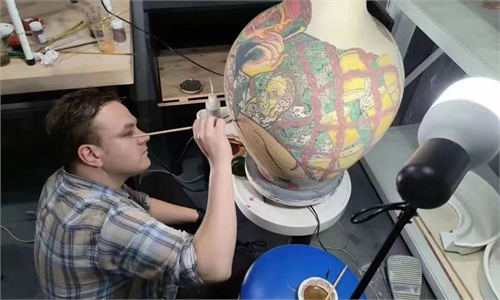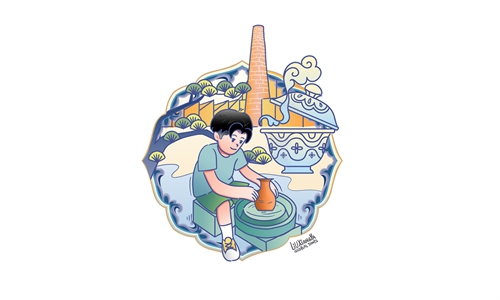ARTS / CULTURE & LEISURE
Craftsman in Jingdezhen keeps reviving ancient porcelain techniques
Gift from ancestors
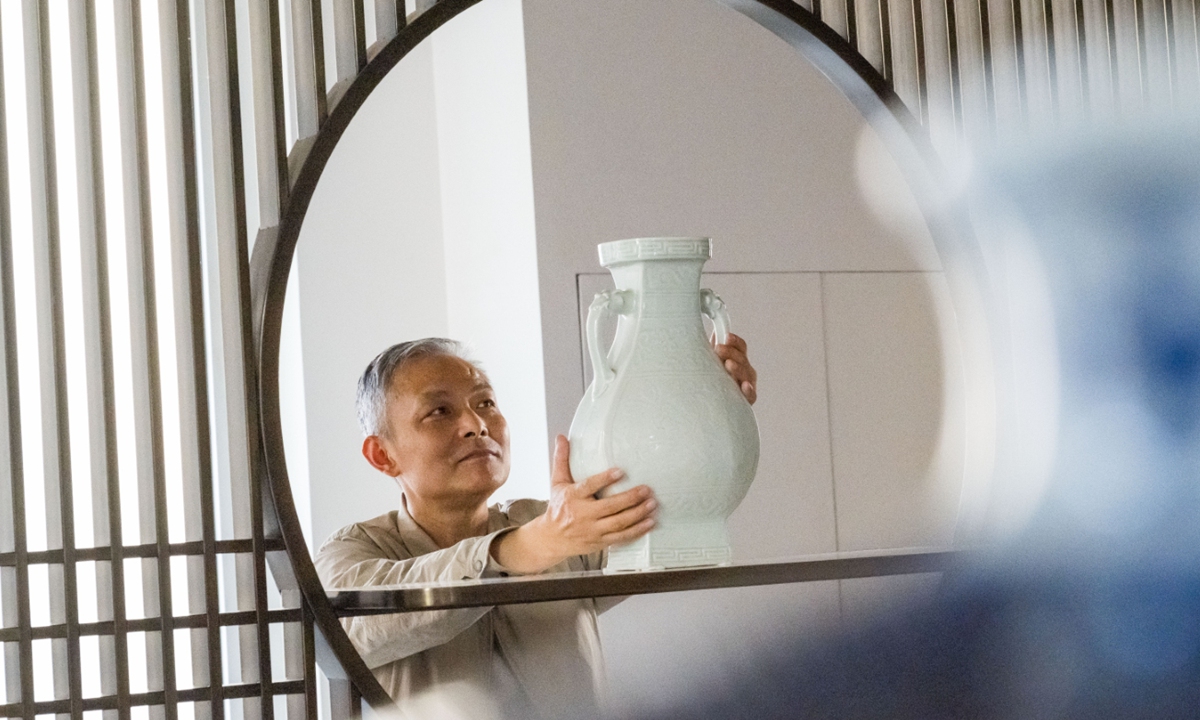
Gong Hua examines a porcelain ware in Beijing on May 13, 2024. Photo: Chen Tao/GT
Jingdezhen, known as the "porcelain capital" in East China's Jiangxi Province, has a ceramic history of over 2,000 years. On the outskirts of Jingdezhen, there is a traditional wood-fired kiln called Gong Hua Kiln, which has been used for over 20 years.Unlike most kilns that burn day and night, it still employs ancient Chinese techniques and fires only three times a year just to produce high-quality ceramics each time.
The owner of the kiln, Gong Hua, is renowned for his decades of dedication to traditional Chinese ceramic craftsmanship. Gong absorbed various painting techniques from ancient kilns and merged them with contemporary aesthetics forming his unique artistic style.
His kiln still employs the production techniques and materials of Jingdezhen porcelain from the Song Dynasty (960-1279) onward, creating both replicas of porcelain artifacts from the Song to Qing (1644-1911) dynasties for better conservation and innovative products that combine traditional techniques with modern art design.
"Someone has to dedicate themselves to this craft. If we master traditional techniques, others can avoid some detours. This is a cultural gift from our ancestors to future generations, and we must not lose it!" Gong said.
Decades of dedication
The 62-year-old Gong has been in the industry for over 45 years. Born and raised in a porcelain family in Jingdezhen, Gong was surrounded by porcelain from a young age. In 1984, Gong graduated from the art department of Jingdezhen University and started working in ceramic design. His growing interest in historical ceramics led him to contemplate how modern porcelain could achieve the beauty of its peak historical periods.
In 1987, during Jingdezhen's urban renewal, Gong witnessed the excavation of ancient ceramic shards, which made him realize the significant gap between modern and ancient ceramic techniques.
"The glaze was as smooth as jade, an indescribable beauty," he said.
Gong began to search for elements that aligned with historical standards in painting, materials, and other aspects. The historical origins of ceramics were all rooted in Jingdezhen, giving him a geographical advantage.
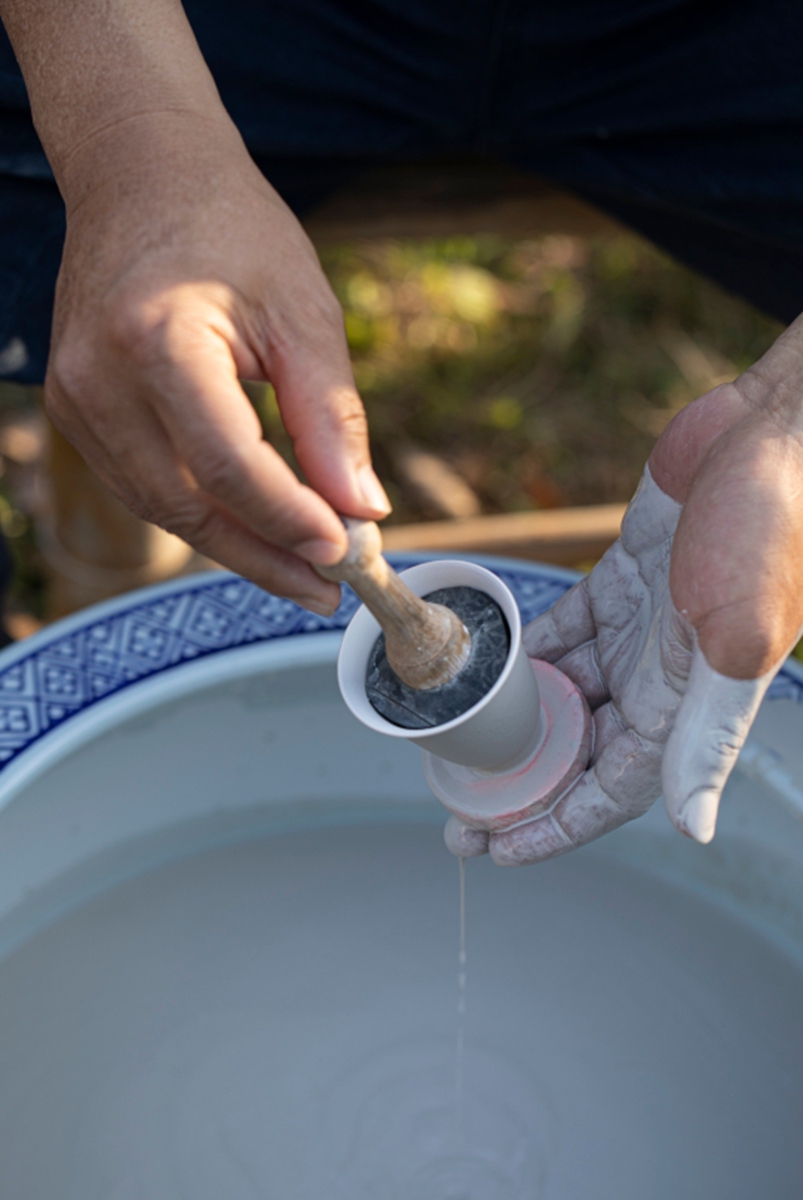
A craftsman dips a pottery ware in glaze at the Gong Hua Kiln. Photo: Courtesy of Gong Hua
Traditional ceramic production involves using natural materials and adhering to ancient processes. Gong spent over a year building his kiln site following the format of ancient workshops. This effort resulted in the creation of Gong Hua Kiln."My kiln is about four or five meters deep and 3 meters at the widest, much smaller than modern kilns," Gong said.
However, the kiln uses ancient production techniques and materials and just fires three times a year to ensure the quality.
Over the years, Gong's kiln has been used to create duplicates of porcelain artifacts for many museums and collectors to protect the originals.
In 2008, Gong's kiln was commissioned by the Beijing Cultural Heritage Bureau to replicate over 10 Ming and Qing dynasties' porcelain artifacts from the Capital Museum's collection.
"These artifacts are unique. Replicating them is essential for their preservation and study," Gong said.
Replicating a piece of porcelain is complex, which involves thoroughly studying the original, gathering information, understanding the production techniques, and finding identical or similar materials. Some materials even need to undergo chemical analysis to ensure they meet the required standards.
"But the most challenging part is the firing process," Gong said. His team has an 80-year-old craftsman who is responsible for firing in the kiln. According to Gong, out of 10 pieces fired, it's considered good if two or three meet the standards, while the rest are discarded.
In addition to replicating classic porcelain, Gong has created many original works. Using his wood-fired kiln and traditional techniques, he produces designs that blend ancient and modern elements. Gong showcased a porcelain verse that combines blue-and-white doucai with Chinese landscape painting. In 2012, a vase he created sold for 552,000 yuan at a Poly Auction.
Fusion and future
Today, Jingdezhen stands as China's only national ceramic culture inheritance and innovation pilot zone, hosting more than 30,000 "Jingpiaos," or migrants who came to the city to pursue their dreams.
According to the Xinhua News Agency, Jingdezhen has forged friendly relations with over 180 cities in 72 countries and regions worldwide, facilitating numerous ceramic-themed exchanges and research activities.
In history, the influence of cultural exchange between China and other countries has been reflected in porcelain from hundreds of years ago.
Gong noted that the most famous example of such cultural exchange in ceramics is the blue and white porcelain.
The decorative style the blue and white porcelain in the Yuan Dynasty (1279-1368) was influenced by 13th-century Persian pottery culture. Later, China combined the blue and white materials introduced from the Middle East with traditional Qingbai porcelain, creating the blue and white porcelain ceramic decoration system.
Jingdezhen now attracts many young people including foreigners who come to visit, and some even settle there to work in ceramics. According to Gong, these young people, having seen the outside world, are able to appreciate the timeless nature of classical beauty and have their own perspectives and appreciation for art, "infusing new vitality into the future of Jingdezhen."
For traditional techniques to be widely preserved and developed, in addition to government support and the dedication of traditional artisans, more young people need to commit to this craft, he said.
"China's craftsmanship has a unique phenomenon where it has never been interrupted. It has been preserved through generations of craftsmen, not just within families but as a collective effort. This continuity has allowed us to reproduce various ancient porcelains because the techniques have been passed down," he said.
Looking to the future, Gong wants to apply historical techniques to everyday items. He has created tea sets in ancient style. In addition to tea sets, he also plans to produce porcelain items such as inkstones and tableware to meet daily needs.
"I believe once you've used fine handmade porcelain, you'll understand the difference between them and machine-produced items," Gong said.

